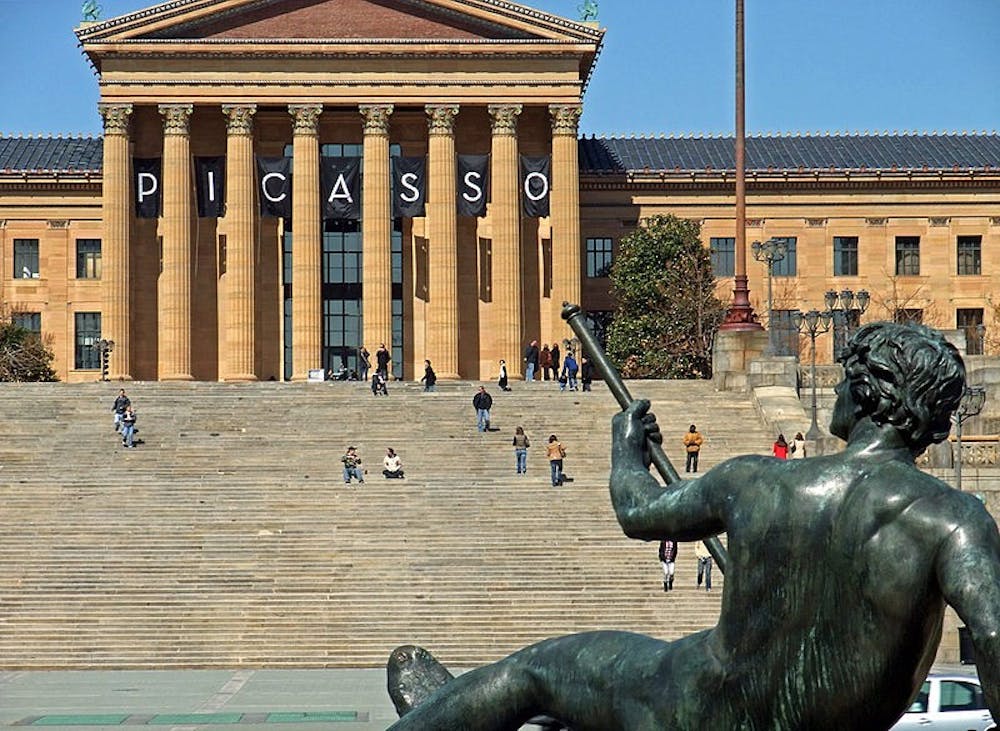One of the most important mantras in art is that the images on the screen aren’t enough. To really understand a piece of art, you have to experience it in person. The torsion of Bernini’s St. Peter’s Baldachin demands a three–dimensional viewing. The light and shadow of Picasso’s cardboard guitars bring the abstract shapes together to form the whole instrument. Hans Holbein’s The Ambassadors has a memento mori that can only be fully seen when the viewer stands at an extreme angle relative to the painting’s surface. But what happens when the art student can no longer afford admission to the art museum?
Though this is a long–standing issue, it has come up again recently in light of the Metropolitan Museum of Art’s dramatic decision to change their admissions policy: non–residents of New York are now subject to a $25 entry fee to a museum long–known for being free–of–charge. Does this mean that art is then no longer a public right for those of us who more often see $25 as five chicken over rices? (that is, at the stand on 38th and Walnut). The upcharge is a result of many factors, but is most prominently due to incompatibility with the museum’s executives and an over–reliance on big name donors to support the museum. The fact of the matter is that, without a well–organized budget plan, it’s difficult to keep up a multi–million dollar institution without charging admission.
This struggle to minimize entry fees while still maintaining the museum is by no means isolated to the Met. Recently, the Barnes Foundation in Philly, which is home to a vast collection of work by artists like Matisse, Renoir, and Cézanne, has upped the price for college students from free to $5. The Philadelphia Museum of Art (PMA) also charges a steep $14 for college students and $20 for adults, not inclusive of any additional fees needed to see certain featured exhibitions.
There are loopholes to these rules: The Barnes Foundation hosts Free First Sundays, when admission is free the first Sunday of each month. Similarly, the PMA operates according to a pay–what–you–wish fee on the first Sunday of each month and every Wednesday from 5:00pm and 8:45pm. Each also has reasonable membership deals that can greatly reduce the cost per visit if you plan on going frequently. For art and design college students, in particular, the PMA allows free membership with a student I.D., a benefit that can be taken advantage of even if you’ve only taken one art or art history class.
But don’t let these ways around the admissions fee make you forget the larger issue at hand. Art institutions everywhere are struggling. Even if you aren’t a frequent patron of such museums, the economic implications of these financial issues should shake you. If a household name like the Met has deemed it necessary to change an admission policy that they’ve held for over 50 years, it should be a sign of how seriously this issue demands our attention.
Artists everywhere are protesting these policy changes, pointing out the paradox behind the fact that the artists whose work hangs on the walls would not themselves have been able to afford entry to the museum at these prices. Access to art should be a public right, not a privilege.
While these changes may financially benefit and sustain the museum, they will alter the way the average patron thinks about art. For one, it discourages multiple viewings and has the potential to increase dissatisfaction, as guests will start to plan their visits to get the most for their money. It’s a sight that’s all too familiar: tour groups darting from masterpiece to masterpiece without taking more than a few minutes to absorb the beauty in front of them. But there’s always been a balance between such viewers and those who can stay in the same gallery for hours, never getting enough of each piece. In light of all of these changes to the admission prices, how then will this balance start to change?
All of these points are fair and valid, yet still none offer a full solution to the problem of affording art museums. I’m still a full advocate for viewing art in person, but I acknowledge the difficulty of making that monetary sacrifice. But if you can, you should. And if you can’t, you should look for any little way to help bring the return of free admission.

